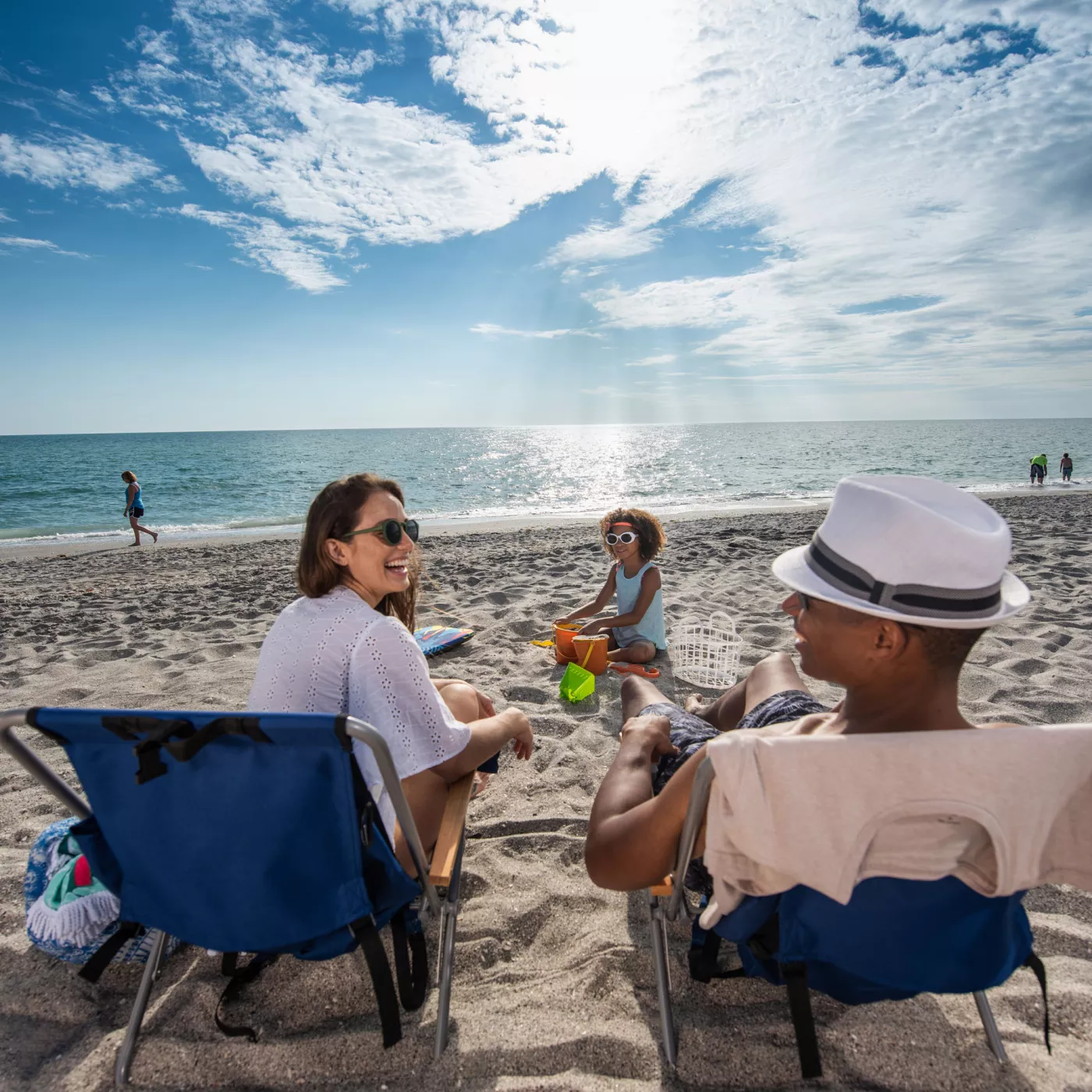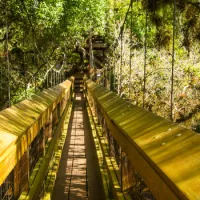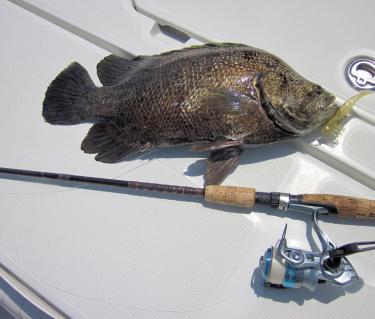Monthly Fishing Reports from Sarasota Area
Here’s the latest report from fishing guides in the area.
Here’s the latest report from fishing guides in the area.
January Fishing Report—Capt. Rick Grassett
Rick Grassett is a Charter Captain with CB's Saltwater Outfitters on Siesta Key
You may find reds and big trout concentrated in potholes in January. Action with trout, blues, Spanish mackerel, pompano and more on deep grass flats can be good depending on conditions. There should also be good catch and release snook action in rivers, creeks and canals this month, although fishing docks for snook and other species is also a good option. It may be worth checking the coastal gulf for tripletail, cobia, false albacore (little tunny) and more when it’s warm.
Snook
Snook season is closed during January, although catch and release fishing is allowed. They are temperature sensitive, so use tackle heavy enough to catch and release them quickly with as little handling as possible. Since they are fragile, I won’t target them if the water temperature dips below 60 degrees. However, fishing lighted docks in the ICW at night with lures and flies can be very good in January. Small white flies, like my Grassett Snook Minnow, Gurglers and shrimp fly patterns will work well for fly anglers. Spin anglers should score with live shrimp, CAL jigs with shad tails or 4” jerk worms, DOA Tiny TerrorEyz and DOA 2-3/4” & 3” Shrimp. Fish peak tidal flows for the best action. Full regulations and details for all species can be viewed at https://myfwc.com/ .
You should also find snook in rivers, creeks and canals this month. Fish deeper water in outside bends to locate snook where you may catch them with CAL jigs and shad tails or jerk worms or DOA Baitbusters. You may also find reds, juvenile tarpon and even largemouth bass in the same areas depending on salinity.
Reds
Reds should be a good option this month. You’ll find them concentrated in potholes or tailing on shallow flats when the tide is low. You’ll need weedless rigged plastic baits or flies with weed guards to target tailing reds. A CAL shad tail on a weedless hook or a DOA shrimp rigged weedless are a couple of my favorite lures for tailing reds. You may also find reds around docks, along with snook, sheepshead and flounder. Little Sarasota Bay has numerous oyster bars and docks that often hold reds in January. Work CAL jigs slowly along the bottom for the best action. You’re likely to find big trout in many of the same areas that you find reds. In my opinion it’s important to protect larger trout, which are usually female breeders. The same lures, flies and techniques that are used for reds will also work for big trout.
Trout
You’ll also find trout on deep grass flats in January along with blues, Spanish mackerel, pompano and flounder. I like to drift and cast ahead of my drift with CAL jigs and a variety of plastic tails and DOA Deadly Combos. Since trout can sometimes hold very tight to a particular spot or area, try to cover as much water as possible to find them. Once you’ve located fish you can shorten your drift or anchor on them. A GPS can be useful for this type of fishing since the breadcrumb trail will allow you to duplicate your drift. A drift anchor will slow your drift so you can fish it more thoroughly or make it easier for fly anglers to move their fly. My favorite deep grass flats, have a good mix of grass and sand with a strong tidal flow.
Even though there may not be much happening in the coastal gulf this month it may be worth a look when it is warm. Migratory species such as Spanish mackerel, cobia and tripletail probably have moved further south, however they could reappear during warm ups. Also look for false albacore (little tunny) when it’s warm since they may move from offshore to inshore depending on where baitfish are located.
Seasonal Tips
January can be one of the toughest months of the year to fish. However if you are able to choose when to fish based on tides and weather, it can be good. Action is usually good as weather fronts approach. Following fronts, fishing may be tough for a couple of days so afternoons may fish better at that time. Our natural resources are under constant pressure, please limit your kill, don’t kill your limit!
Yearly Overview
January - It can be one of the toughest months of the year to fish. When the tide is low, look for reds tailing on shallow grass or reds, trout and more in potholes or around docks. When it is high, look on shallow grass flats on sunny afternoons. Action with trout, blues, Spanish mackerel, pompano and more on deep grass flats can be good depending on conditions.
February - February can be a tough month to fish. With frequent fronts and cool water, fish aren’t always in an eating mood. If you’re able to pick good tides combined with favorable weather conditions, you should be successful. Trout and redfish should be good shallow water options this month. You may also find trout along with blues, Spanish mackerel, pompano and flounder on deep grass flats. Look for sheepshead, flounder, reds and more around docks.
March - There should be good action with reds, trout and snook in skinny water in March as baitfish become more plentiful. Look for Spanish and king mackerel, cobia, tripletail and false albacore (little tunny) in the coastal gulf. Night snook fishing in the Intracoastal Waterway (ICW) should also be a good option this month.
April - This is a great month for snook, Reds, and trout on warm, shallow flats due to an increase in baitfish. Spanish mackerel, blues and pompano in passes or on deep grass flats. Tarpons, Spanish mackerel, false albacore (little tunny), cobia and tripletail should also make an appearance in back country areas and in the coastal gulf later in the month.
May - Tarpon, Spanish mackerel, tripletail, cobia and false albacore (little tunny) can be found along our beaches in the coastal gulf. Snook will move into passes and the surf and reds and trout should feed heavily on shallow flats as baitfish become more plentiful. Trout, blues, Spanish mackerel and more should be good options on deep grass flats
June - Tarpon should be plentiful in the coastal gulf this month as big schools of fish migrate along our beaches. Also look for cobia, tripletail and false albacore (little tunny) in the coastal gulf.
July - There are lots of options this month, late season tarpon, snook in the surf or at night or fishing skinny water for reds or big trout. Tarpon fishing is best early in the day in shallow waters.
August - Tarpon will move into estuaries this month. You may also find juvenile tarpon in creeks, canals and turning basins. Reds should be schooling on shallow flats and big trout will prowl the same waters at dawn. Also look for trout on deep grass flats mixed with blues, pompano, Spanish mackerel and more.
September - Fishing dock lights before dawn is usually dependable for snook and more and is a great way to beat the heat. Juvenile tarpon and reds may also frequent dock lights this time of year. Fishing deep grass flats of Sarasota Bay is a good choice for action with a variety of species including trout, blues, and Spanish mackerel.
October - Schools of reds will begin to break up and scatter on shallow flats. There should also be good action with snook and big trout in shallow water. Snook will gorge themselves at night around lighted docks in the ICW. There should also be good action in the coastal gulf with Spanish mackerel, false albacore (little tunny), tripletail and cobia. You might also still find tarpon anywhere from upper Charlotte Harbor and Tampa Bay to along the beaches.
November - This a great month for fishing the flats or the coastal gulf. Since the action in the coastal gulf is seasonal and will end when it gets cooler, there will also be plenty of action for a variety of fish on shallow and deep grass flats of Sarasota Bay.
December - This is a good month for catch and release snook action around lighted docks in the ICW. Also, there is good action in the coastal gulf with false albacore (little tunny), Spanish mackerel and tripletail, depending on conditions.

![Boat parking at The Crow’s Nest in Venice [Photo: Lauren Jackson]](/sites/default/files/styles/popular_stories_teaser/public/2023-import/The-Crow%2527s-Nest-cropped__OPT.jpg.webp?itok=ycs37M-O)



